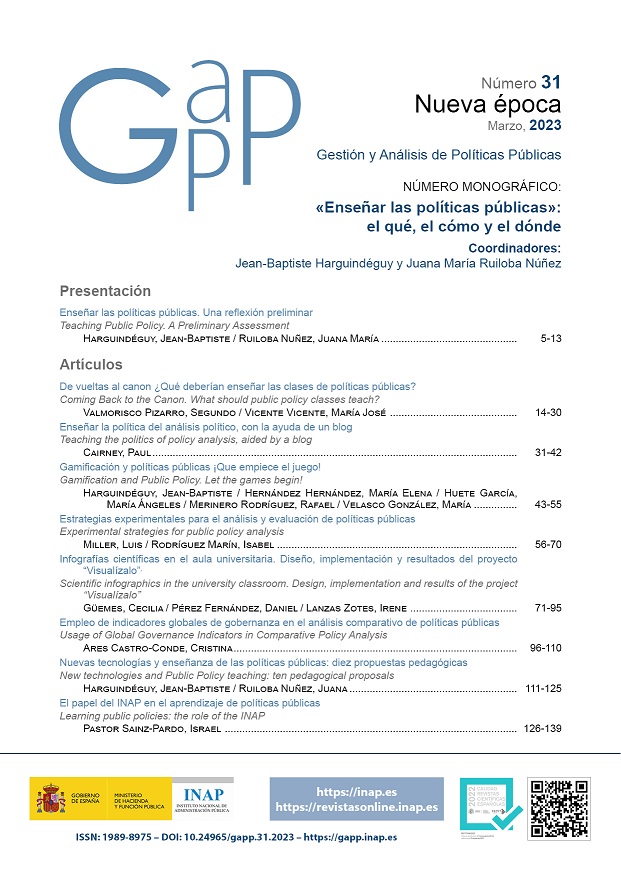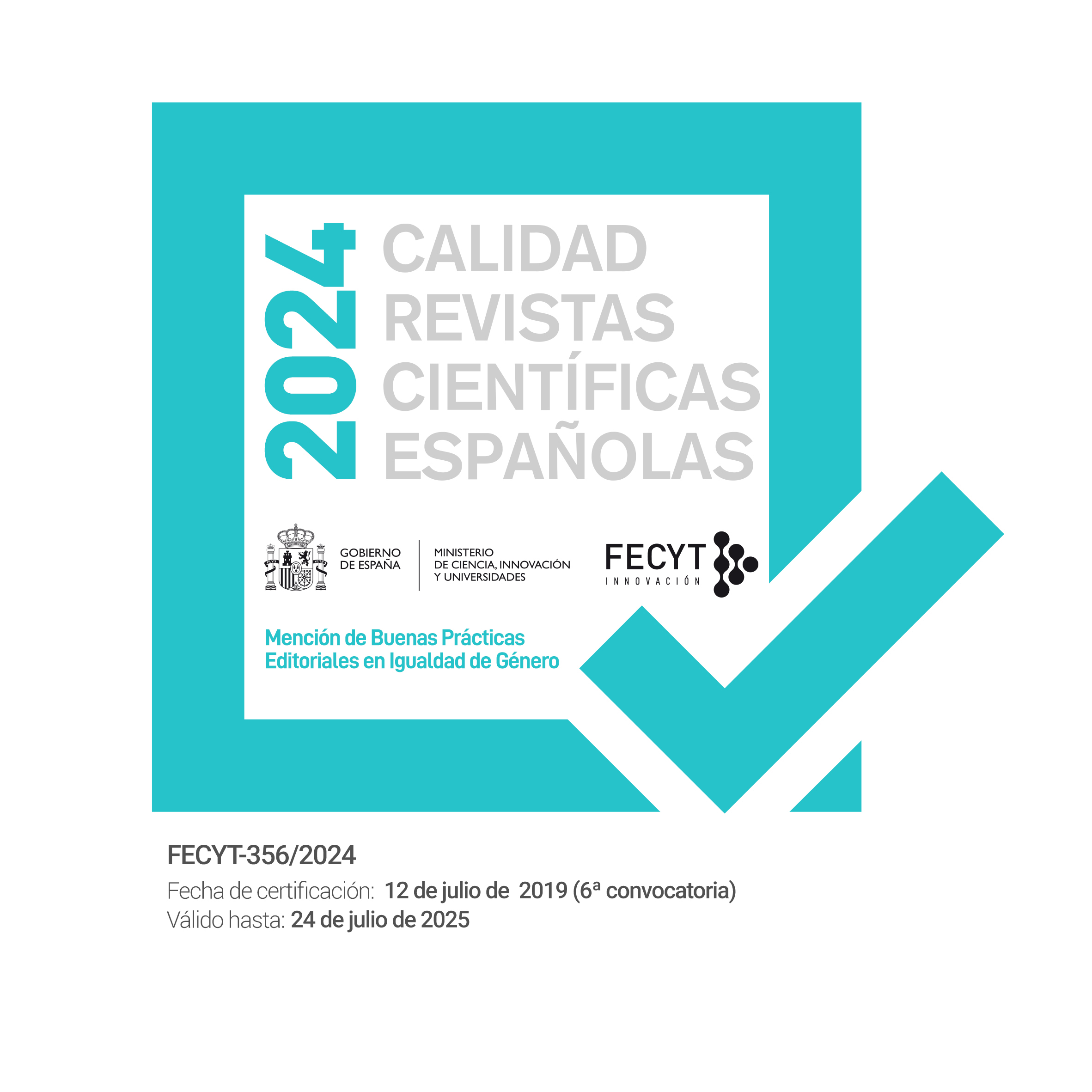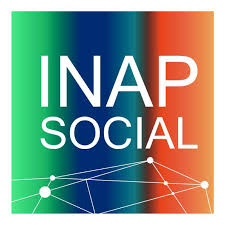Enseñar la política del análisis político, con la ayuda de un blog
DOI:
https://doi.org/10.24965/gapp.11146Palabras clave:
Enseñanza, análisis de políticas públicas, racionalidad limitada, blog, administración públicaResumen
La enseñanza del análisis de políticas públicas no debería limitarse a formar futuros analistas, sino que debería también tomar en cuenta el contexto global de producción de la acción pública. La mayor parte de los textos básicos se centran en las competencias individuales necesarias para convertirse en un buen profesional capaz de actuar de forma eficaz y eficiente en un entorno político donde el tiempo apremia. En paralelo, las investigaciones sobre el proceso de políticas públicas ayudan a ubicar esta actividad en un entorno cambiante e incontrolable. Por su parte, el análisis crítico de las políticas públicas insta a los estudiantes a identificar las desigualdades que sesgan la práctica y los resultados de la acción gubernamental. Sin embargo, a lo largo de su carrera universitaria los alumnos/as de políticas públicas suelen experimentar el concepto central de «racionalidad limitada» en su propia carne. Se enfrentan a una cantidad ingente de información y disponen de recursos limitados para procesarla. En este contexto, ¿cómo ayudarles a orientarse en sus estudios para que puedan elegir los contenidos y los métodos apropiados? Es aquí donde interviene el uso de un blog (así como de otros materiales) para fomentar la enseñanza de las políticas públicas y la reflexión acerca de sus implicaciones prácticas.
Descargas
Citas
Bacchi, C. (2009). Analysing Policy: What’s the problem represented to be? (1.ª ed.). Pearson Education.
Bardach, E., & Patashnik, E. (2020). A Practical Guide for Policy Analysis (6.ª ed.) [international student edition]. SAGE.
Baumgartner, F., & Jones, B. (2009). Agendas & Instability in American Politics (2.ª ed.). University of Chicago Press.
Baumgartner, F., & Jones, B. (2015). The Politics of Information. Problem Definition & the Course of Public Policy in America. University of Chicago Press.
Brans, M., Geva-May, I., & Howlett, M. (2017). The policy analysis movement: The state of the art. In M. Brans, I. Geva-May y M. Howlett (eds.), Routledge Handbook of Comparative Policy Analysis. Routledge.
Cairney, P. (2016). The Politics of Evidence-Based Policy Making (1.ª ed.). Palgrave Pivot.
Cairney, P. (2020). Understanding Public Policy: Theories and Issues (2.ª ed.). Red Globe.
Cairney, P. (2021a). The Politics of Policy Analysis. Palgrave Macmillan.
Cairney, P. (2021b). The politics of policy design. EURO Journal on Decision Processes, 9, article 100002, 1-8. https://doi.org/10.1016/j.ejdp.2021.100002
Cairney, P., & Kwiatkowski, R. (2017). How to Communicate Effectively with Policymakers: Combine Insights from Psychology and Policy Studies. Palgrave Communications, 3, article 37. https://www.nature.com/articles/s41599-017-0046-8
Cairney, P., & Weible, C. (2017). The new policy sciences: combining the cognitive science of choice, multiple theories of context, and basic and applied analysis. Policy Sciences, 50(4), 619-627. https://doi.org/10.1007/s11077-017-9304-2
Cairney, P., Heikkila, T., & Wood, M. (2019). Making Policy in a Complex World [serie: Elements in Public Policy]. Cambridge University Press.
Cairney, P., Keating, M., Kippin, S., & St Denny, E. (2022). Public Policy to Reduce Inequalities Across Europe: hope versus reality. Oxford University Press.
Crow, D., & Jones, M. (2018). Narratives as Tools for Influencing Policy Change. Policy & Politics, 46(2), 217-234. https://doi.org/10.1332/030557318X15230061022899
Doucet, F. (2019). Centering the Margins: (Re)defining Useful Research Evidence Through Critical Perspectives. William T. Grant Foundation. https://eric.ed.gov/?id=ED609713
Dunn, W. (2017). Public Policy Analysis: An Integrated Approach (6.ª ed.). Routledge.
Durnová, A., & Weible, C. (2020). Tempest in a teapot? Toward new collaborations between mainstream policy process studies and interpretive policy studies. Policy Sciences, 53, 571-588. https://doi.org/10.1007/s11077-020-09387-y
Enserink, B., Koppenjan, J., & Mayer, I. (2013). A Policy Sciences View on Policy Analysis. In W. Thissen & W. Walker (eds.), Public Policy Analysis: New Developments (pp. 11-40). Springer.
Fischer, F. (1998). Beyond empiricism: policy inquiry in postpositivist perspective. Policy Studies Journal, 26(1), 129-146. https://doi.org/10.1111/j.1541-0072.1998.tb01929.x
Fukuyama, F. (2018, august 1). What’s Wrong with Public Policy Education. The American Interest (accessed 12.2.20). https://www.the-american-interest.com/2018/08/01/whats-wrong-with-public-policy-education/
Geva-May, I. (ed.) (2005). Thinking Like a Policy Analyst Policy: Analysis as a Clinical Profession. Palgrave Macmillan.
Gigerenzer, G. (2001). The Adaptive Toolbox. In G. Gigerenzer & R. Selten (eds.), Bounded rationality: The adaptive toolbox (pp. 37-50). The MIT Press.
Hassenteufel, P., & Zittoun, P. (2017). From Policy Analytical Styles to Policymaking Styles. In M. Brans, I. Geva-May, & M. Howlett (eds.), Routledge Handbook of Comparative Policy Analysis (pp. 56-69). Routledge.
Hindess, B. (1977). Philosophy and Methodology in the Social Sciences. Harvester Press.
Hogwood, B., & Gunn, L. (1984). Policy Analysis for the Real World. Oxford University Press.
Jones, M., & Radaelli, C. (2016). The narrative policy framework’s call for interpretivists. Critical Policy Studies, 10(1), 117-120. https://doi.org/10.1080/19460171.2015.1111156
Jones, M., Shanahan, E., & McBeth, M. (eds.) (2014). The Science of Stories: Applications of the Narrative Policy Framework in Public Policy Analysis. Palgrave Macmillan.
Jordan, A. G., & Cairney, P. (2013). What is the “Dominant Model” of British Policy Making? Comparing Majoritarian and Policy Community Ideas. British Politics, 8(3), 233-259. https://doi.org/10.1057/bp.2013.5
Jordan, A. G., & Maloney, W. A. (1997). Accounting for Subgovernments: Explaining the Persistence of Policy Communities. Administration and Society, 29(5), 557-583. https://doi.org/10.1177/009539979702900503
Kahneman, D. (2012). Thinking Fast and Slow. Penguin.
Kingdon, J. (1984). Agendas, Alternatives and Public Policies. Harper Collins.
Koski, C., & Workman, S. (2018). Drawing practical lessons from punctuated equilibrium theory. Policy and Politics, 46(2), 293-308. https://doi.org/10.1332/030557318X15230061413778
Lasswell, H. (1951). The policy orientation. In D. Lerner, & H. Lasswell (eds.), The policy sciences. Stanford University Press.
Lasswell, H. (1956). The political science of science: An Inquiry into the Possible Reconciliation of Mastery and Freedom. American Political Science Review, 50(4), 961-979. https://doi.org/10.2307/1951330
Lasswell, H. (1971). A pre-view of the policy sciences. American Elsevier Publishing.
Lindblom, C. (1959). The Science of Muddling Through. Public Administration Review, 19(2), 79-88. https://doi.org/10.2307/973677
Lindblom, C. (1979). Still Muddling, Not Yet Through. Public Administration Review, 39(6), 517-526. https://doi.org/10.2307/976178
Mayer, I., van Daalen, C. E., & Bots, P. (2013). Perspectives on Policy Analysis: A Framework for Understanding and Design. In W. Thissen, & W. Walker (eds.), Public Policy Analysis: New Developments (pp. 41-64). Springer.
Meltzer, R., & Schwartz, A. (2019). Policy Analysis as Problem Solving: A Flexible and Evidence-Based Framework. Routledge.
Mintrom, M. (2012). Contemporary Policy Analysis. Oxford University Press.
Mintrom, M. (2019). So you want to be a policy entrepreneur? Policy Design and Practice, 2(4), 307-323. https://doi.org/10.1080/25741292.2019.1675989
Ostrom, E. (2007). Institutional Rational Choice. In P. Sabatier (ed.), Theories of the Policy Process (2.ª ed.). Westview Press.
Ostrom, E. (2011). Background on the Institutional Analysis and Development Framework. Policy Studies Journal, 39(1), 7-27. https://doi.org/10.1111/j.1541-0072.2010.00394.x
Radin, B. (2019). Policy Analysis in the Twenty-First Century. Routledge.
Richardson, J. J., & Jordan, G. (1979). Governing under Pressure: The Policy Process in a Post-Parliamentary Democracy [Government and administration series]. Martin Robertson, & Company Ltd.
Sabatier, P., & Weible, C. (2007). The Advocacy Coalition Framework: Innovations and Clarifications. In P. Sabatier (ed.) Theories of the Policy Process. Westview Press.
Schlager, E., & Cox, M. (2018). The IAD Framework and the SES Framework: An Introduction and Assessment of the Ostrom Workshop Frameworks. In C. Weible, & P. Sabatier (eds.), Theories of the Policy Process (4.ª ed.). Routledge.
Schneider, A., & Ingram, H. (1997). Policy Design for Democracy. University Press of Kansas.
Schneider, A., & Ingram, H. (eds.) (2005). Deserving and Entitled: Social Construction and Public Policy. State University of New York Press.
Simon, H. (1976). Administrative Behavior: A study of decision-making processes in administrative organization (3.ª ed.). Free Press.
Smith, L. T. (2012). Decolonizing Methodologies: Research and Indigenous Peoples (2.ª ed.). Zed Books.
Stone, D. (2012). Policy Paradox: The Art of Political Decision Making (3.ª ed.). WW Norton, & Co.
Thissen, W., & Walker, W. (eds.) (2013). Public Policy Analysis: New Developments. Springer.
True, J., Jones, B., & Baumgartner, F. (2007). Punctuated Equilibrium Theory: explaining stability and change in public policymaking. In P. Sabatier (ed.), Theories of the Policy Process (2.ª ed.). Westview Press.
Weible, C., & Cairney, P. (2018). Practical lessons from policy theories. Policy and Politics, 46(2), 183-197. https://doi.org/10.1332/030557318X15230059147191
Weible, C., Heikkila, T., deLeon, P., & Sabatier, P. (2012). Understanding and influencing the policy process. Policy Sciences, 45(1), 1-21. https://doi.org/10.1007/s11077-011-9143-5
Weimer, D., & Vining, A. (2017). Policy Analysis: Concepts and Practice (6.ª ed.). Routledge.
Descargas
Publicado
Cómo citar
Número
Sección
Licencia
Derechos de autor 2022 Gestión y Análisis de Políticas Públicas

Esta obra está bajo una licencia internacional Creative Commons Atribución-NoComercial 4.0.












